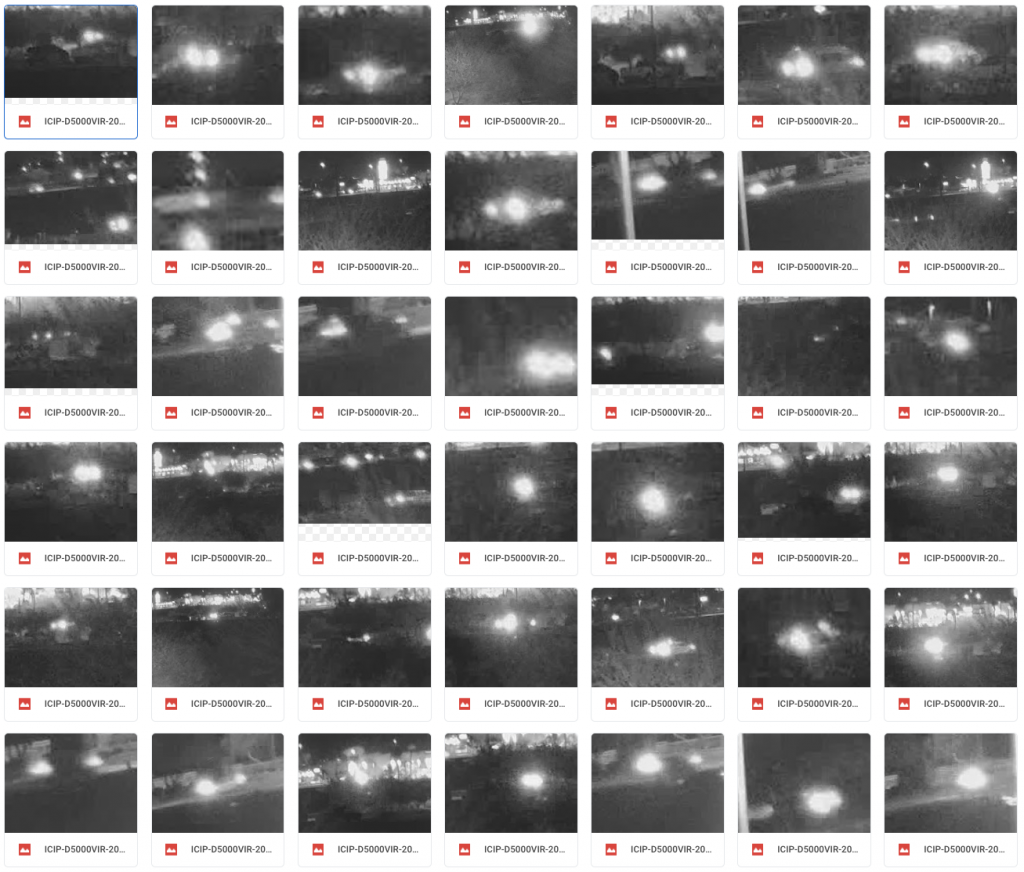This blog post was originally published at Camio's website. It is reprinted here with the permission of Camio.
Assembling realistic and relevant training data is critical to the quality of AI classifiers. But finding and collecting all that real-life data is hard — especially when the training data is specialized for specific camera scenes and private to each owner of the video.
Camio makes it fast to download nicely cropped training images using its search box. The search operator filetype:cropping requests that the downloaded search results include JPEG images cropped to the bounding box of each region of motion in the video.

For example, the query “cars 1pm to now filetype:cropping” produced these cropped images of cars.
Search “cars 1pm to now filetype:cropping” to download matching cropped images.
Unlike the controlled environments in portrait photos and movies, surveillance video is very messy from a Computer Vision and Machine Learning perspective. It suffers from bad lighting, blurry images, occluded views, strange camera orientations, wide-angle distortions, transient reflections, low frame rates, infrared color transitions, variable bitrate pixelations, inconsistent resolutions, etc… It’s a real hodgepodge.
Differentiating even among cars, explosions, and flickering lights is hard at night — regardless of whether the events are recorded with a 4K surveillance cameras. When cars are passing in the far distance, with headlights partially occluded by trees, the visual analysis needs lots of training data specific to the conditions in these scenarios.

The orange bounding box of the motion-region is downloaded as a training image.
Any human that watches this 4K video quickly knows that it’s a car with headlights — not a flame or explosion. That quick human understanding is strictly visual — without infrared thermal cameras or LIDAR scanners! The speed, trajectory, and historical pattern of the motion certainly help with a machine’s learned understanding, but a human’s visual analysis even of a single snapshot image can often get it right.
Even great 4K video presents big Machine Learning challenges in understanding what’s happening.
For Artificial Intelligence to improve the precision and recall in recognizing what’s happening in real-world video — with all its messy imperfections — lots of good training data and images are needed. And “good” means realistic and relevant to the classification goals. So the Camio filetype:cropping search operator and automated download scripts aim to help partners quickly assemble great training data from any H.264 video stream.

Very imperfect images — typical even in 4K surveillance video.
In addition to helping with the collection of images to train Machine Learning models, Camio also makes it simple to deliver those trained models to end customers via Camio Hooks. The models can run on any server accessible via https. So whether the ML models are for fish faces or security threats, the automated image download and model deployment accelerate the precision and recall improvements that end customers see immediately.
Learn more in the Camio help article Can I download training data for my own Machine Learning classifiers?.
Carter Maslan
CEO, Camio


